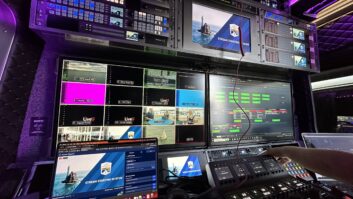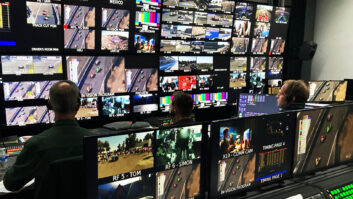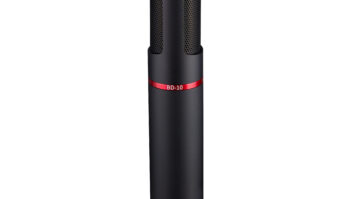As a preferred wiring company to some of the most prolific media companies and systems integrators across the globe – providing wiring services at the world’s biggest sporting events, popular reality TV shows and cutting-edge productions – Axis Media offers a boots-on-the-ground insight into the challenges that IP adoption brings to cabling for major productions.
“We work on cabling for everything from OB truck builds, upgrades and maintenance to flypacks, on-location and cross-site wiring,” explains Martin Chalkley, founder, Axis Media. “Our work is critical as we’re ultimately responsible for the transmission and integrity of every signal from every camera to the production units and beyond, often for live broadcasts.”
Axis Media is currently providing wiring services for a motor racing world series, it’s also scheduled to provide cabling for a famous London-based tennis tournament this summer; and earlier this year, it completed a wiring project for a yet-to-be aired game-based reality TV show for a leading OTT subscription-based video platform.
“In such a fast-moving industry, final decisions can be last minute, so we’ve learned to be reactive,” adds Chalkley. “Reliable suppliers, such as Argosy, are essential as they can always deliver the next day. Project budgets and financial constraints mean that materials, such as racks, metalwork and flypacks need to be recycled, rather than replaced. This is a challenge in itself, more so than working with brand new materials, as breaking down these items has to be done in such a way that they are not damaged.”
A signal change
Now that viewers are demanding high-end UHD content across multiple viewing platforms, HD-SDI bandwidth is no longer sufficient and media companies, broadcasters and production companies are now rapidly implementing IP workflows.
“HD-SDI bandwidth is unidirectional and cannot manage multiple inputs and outputs, unlike bi-directional IP switches,” explains Chalkley. “Another major benefit of IP systems includes cloud-based platforms, which of course require less physical storage. Because of this, there has been a major change in cabling and connectivity requirements.
With major networks and broadcasters choosing the IP route, there has been a massive reduction in copper cabling. which has presented challenges for wiring teams. To stay ahead of the game, Axis Media has re-trained its wiring team to work with fibre cabling and fibre termination, as well as management and testing, which has also meant a significant investment in termination and testing equipment.
“Argosy has been an invaluable partner in this field by supplying equipment and fibre products, coupled with advice and training,” Chalkley continues. ”I believe that wiring huge 500 x 500 video routers to termination panels will be few and far between – requests to wire this sort of technology are becoming less and less – especially for larger production companies.”
Only a few years ago fibre cable was twice the price of copper but is now considerably less, and it has a much greater speed and distance of transmission than copper.
“Most copper networks can provide speeds of up to 100Mbps but are becoming less efficient and more expensive, whereas fibre uses less energy than copper systems,” observes Chalkley. “Now that copper is reaching the maximum data transfer, it makes total sense that fibre is becoming the industry’s favourite.”
Copper also carries five times higher maintenance costs than fibre. As it naturally corrodes over time, copper has a limited life expectancy and is more susceptible to signal degradation and other performance issues.
“A growing environmental awareness and the industry’s focus to reduce carbon footprint is another reason to phase out copper-based installations,” adds Chalkley.
Caretaking is crucial
There is a constant requirement for cable maintenance, especially when it comes to OB trucks due to the fast-moving nature of the business and time constraints. If we take the English Premier League as an example, multiple football matches are covered over the course of a single weekend, as well as during the week.
“Because of this we have short windows to replace damaged cables and connectors, so we rely on companies like Argosy and their ability to supply what we need when we need it,” says Chalkley.
“Regarding the types of signal cables, there is a huge amount more data cable and especially fibre required now within the OB trucks.”
Chalkley points out that trying to get another 50 or so CAT6 and fibre cables through a 10-year-old OB truck in an already full cable duct “is an art in itself.”
Running new fibre through the underside of a vehicle and preventing any damage is tricky. Installing large amounts of fibre into an already packed rack, whilst keeping the cables protected, requires skill. The new cables also need to be serviceable considering the physical confines of OB racks, and replacement is often favoured over repair.
But this can be overcome by adding contingency cables, running draw wires for future cable pulls and using protection tubes within the racks. “We also encounter a lot of damage and corrosion to the connectors on the tailboard which are in constant need of repair or replacement,” Chalkley continues.
On location broadcast
Axis Media has worked on many multi-sport and racing events including the pre-wiring of flypacks for on-location production and on-site wiring and support.
“If we are pre-wiring a flypack for use in multiple locations, we must be mindful of the event’s conditions and physical environment and that it will shift from location to location. The wiring must sustain the rigours of being constantly loaded and unloaded, so the quality of the cable and connectors must be of the highest quality. The range of materials available from Argosy ensures this can be achieved,” explains Chalkley.
Rack building for major multi-sports events has changed significantly over the past 3-4 years with the increasing demand for more channels and more content on more platforms. Greater bandwidth is required for the transmission of 4K UHD, which SDI simply cannot deliver. Thus, IP systems are in greater demand and wiring companies are installing more fibre, fibre switches and Ethernet cabling.
Successful conversions
“We are often asked to change out old control systems, multi-viewers, vision mixers, serial router panels and ‘glue’ on trucks, and upgrade them to IP. Where possible existing cabling is reworked including re-pinning control cables, adding Ethernet and fibre.”
Understanding how the conversion from serial control and IP works is an industry-wide challenge: “We often need to search online or through old manuals to find out how an old system works to enable us to use conversion successfully,” says Chalkley.
The challenges continue, but with training, knowledge and understanding, as well as reliable suppliers, wire companies like Axis Media, continue to thrive in the age of IP.







